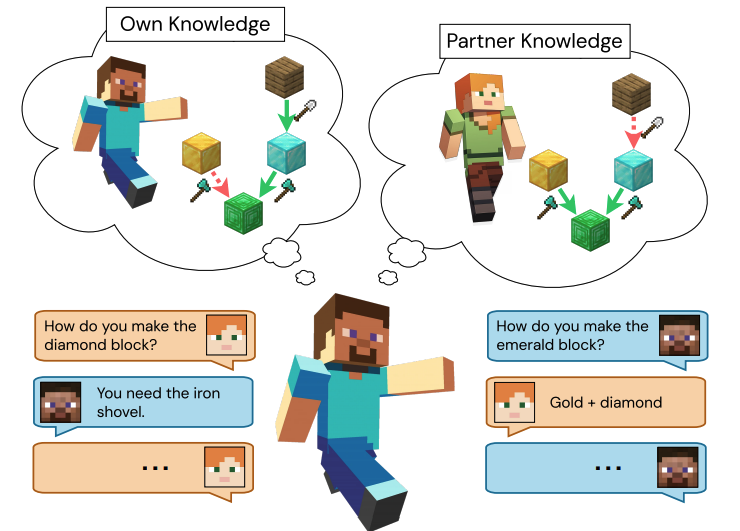Theory of Mind in Collaborative Environments

Description: Theory of Mind is the ability that humans have to infer others' mental states, such as beliefs, desires and intentions. Theory of mind plays a crucial role in maintaining common ground during human collaboration and communication. To study theory of mind modelling in situated interactions, Bara et al. [1] introduced MindCraft, a dataset of collaborative tasks performed by pairs of human subjects in the game Minecraft. In MindCraft, a computational agent has to infer the partner's mental states from the perspective of the other player. However, humans use theory of mind not just as pure observers, but to take actions. The goal of this thesis is to bridge this gap and create an interactive multi-agent environment inspired by the tasks proposed in MindCraft.
Goal:
- implement an interactive multi-agent environment inspired by the tasks proposed in MindCraft
- evaluate deep reinforcement learning baselines on the new environment
- perform different types of analysis
Supervisor: Matteo Bortoletto
Distribution: 10% literature, 70% implementation, 20% analysis
Requirements: self motivation, strong programming skills in Python and PyTorch and/or Jax, knowledge of deep learning and reinforcement learning.
Literature: [1] Bara, Cristian-Paul, CH-Wang Sky, and Joyce Chai. "MindCraft: Theory of Mind Modeling for Situated Dialogue in Collaborative Tasks." EMNLP, 2021.
[2] Bara, Cristian-Paul, et al. "Towards collaborative plan acquisition through theory of mind modeling in situated dialogue." IJCAI (2023).

